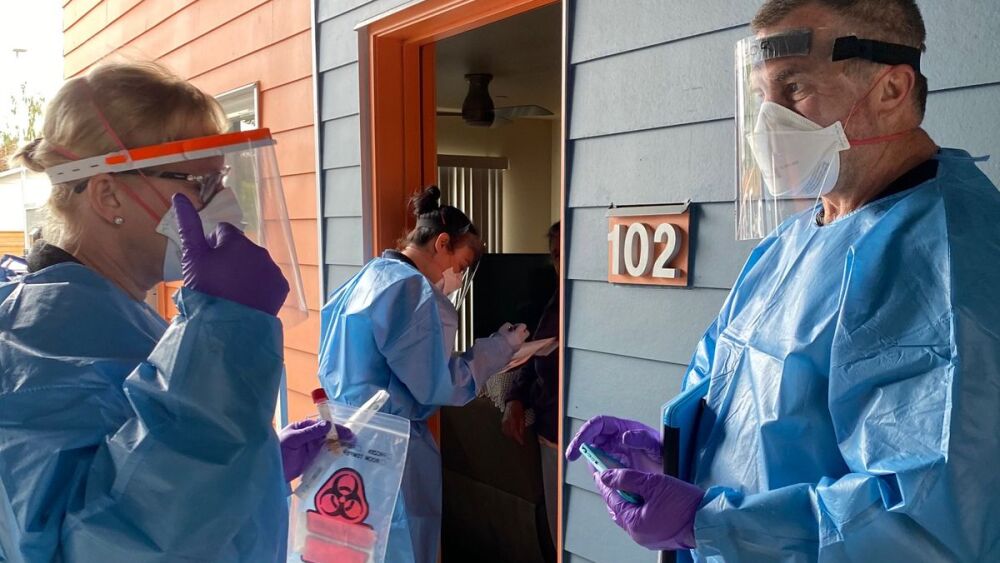Back in December 2020, I received a call from someone from the Wisconsin Emergency Management asking me if I would be interested in a role on the Wisconsin COVID Vaccine Task Force. I thought it was weird that the call was not coming from the Department of Health, but I said I was interested. He told me the rough details of the job terms and sent me a link to a mandatory meeting the next evening.
I quickly learned that while the COVID-19 pandemic and the developing vaccination program were indeed primarily under the authority of the public health officials, the Wisconsin Incident Management Team (IMT) had been brought in to build and manage the massive effort of delivering millions of doses of vaccine to the population. The IMT is made up of experts in incident command, including fire chiefs, law enforcement administrators, EMS leaders and emergency management directors. The IMT is more commonly activated to support a region working through emergencies like wildfires, natural disasters or civil unrest, but this time, it was scaling up for a response that would make history.
I joined several other fire and EMS leaders, recently retired fire chiefs and law enforcement supervisors, and emergency management directors to serve as managers of vaccine distribution for our respective regions. We quickly got up to speed on the details of the vaccine products and began to coordinate moving COVID-19 vaccines to hospitals, the public health department, pharmacies and clinics in our regions. Wisconsin got a slow start, but quickly climbed the charts and for several weeks set the pace for distributing vaccines and getting shots in arms.
My point? Public safety professions are undoubtedly the best in the business at assessing a problem, organizing resources, building a plan and then getting the work done effectively and efficiently. We used incident command system principles and resources to break the problem down and implement solutions.
Every arm counts
The story does not end there. Vaccine roll-out continues, but in many parts of the country, the demand is starting to slow. A large percentage of those who wanted to be vaccinated have been. Many of you helped in those efforts by working at community immunization clinics [In an early March EMS1 poll, 83% of respondents had already been involved in vaccine distribution]. The efforts now must change to getting vaccine doses out to patients that might not come to the clinics or other injection sites. Campaigns are also ramping up to help encourage those on the fence about the vaccine.
You have a new opportunity to help get more shots in arms. You don’t have to join a task force or volunteer for extra duty at vaccination clinics. You just have to be the EMS role models that you already are.
Take these important opportunities to encourage more people in your community to get protected:
- Ask each patient you encounter if they have been immunized. Start a conversation with them about the benefits and encourage them to ask if they can get the shot at the emergency department or follow up with their primary care provider for a dose.
- Talk to your family about being vaccinated. Whether you know it or not, they look at you as a reliable source of medical information. You do not have to be an expert on the topic, just point them to Vaccine.gov or CDC.gov for more facts and information about where they can get an appointment.
- Let your peers know that you have been vaccinated. You do not have to be a walking billboard for Pfizer or Moderna and you do not have to bring it up in every conversation; but simply knowing that many of their coworkers got the “jab” may be enough to convince someone else to do it.
- Be supportive of campaigns to get information to more patients. Even if you opted to not get immunized yourself, as a healthcare professional, you should help get information to patients so they have the opportunity to make a decision for themselves.
Every arm counts in the immunization campaign and any effort you can contribute will make a difference. Thank you for everything you have done to take care of our patients, each other and yourselves during this pandemic. Together we will make it through.
Stay safe out there.
Read next
Deploying a vaccine strike force
An Illinois service partnered with the health department to vaccinate vulnerable populations in homeless shelters, nursing homes, jails and congregate living facilities














